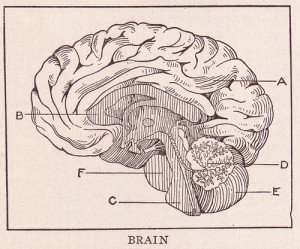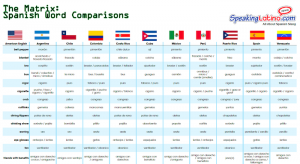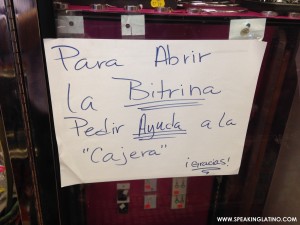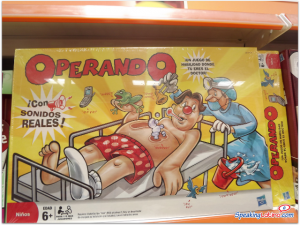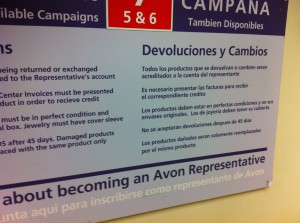This post is part of the series Warming up for El Día E: Posts to Improve Your Spanish. El Día E is a world-wide celebration of the Spanish Language that will take place on June 23th, 2012. Posts in this series to celebrate El Día E: 1. Join the Celebration of El Día E 2. […]
Learning Spanish Lessons: The Difference Between PEDIR and PREGUNTAR
This post is part of the series Warming up for El Día E: Posts to Improve Your Spanish. El Día E is a world-wide celebration of the Spanish Language that will take place on June 23th, 2012. Posts in this series to celebrate El Día E: 1. Join the Celebration of El Día E 2. […]
Why Use Tongue Twisters in Spanish
Tongue twisters or trabalenguas are phrases that use repetitive syllable sounds that make them difficult to pronounce but when practiced can improve your Spanish pronunciation. Because of the rhymes, they are often used with children as a fun exercise to practice Spanish pronunciation and diction when learning the language at an early age. The objective […]
26 Epic Spanish Tongue Twisters (to Improve Pronunciation)
Tongue twisters or trabalenguas are phrases that use repetitive sounds to help you learn Spanish. Those repetitive sounds make them tricky to pronounce at first but when practiced can improve your Spanish pronunciation significantly. Plus it’s one of the most fun ways to practice Spanish!Whether you are looking for simple Spanish tongue twisters for kids […]
Which is the Hardest Spanish Language Word for You to Pronounce?
For years now one Spanish word beat up on me regularly; I could never pronounce it properly. I learned to hate it, even avoided using the word. This lasted for years until last week when my girlfriend (a Puerto Rican native Spanish speaker) walked me through the Spanish pronunciation a couple times. It now rolls […]
Join the Celebration of El Día E: The Day of Spanish Language
The Spanish language has its own day for celebration. And it’s so big that countries such as Japan, Turkey, Australia, Russia, and China have joined. I am talking about El Día E: La fiesta de todos los que hablamos español, a project that the Instituto Cervantes will celebrate for the fourth time on June 23th, […]
The Matrix: English to Spanish Words Compared by Country
The text for this post originally appeared at Mezzofanti Guild. Thanks, Donovan, for the opportunity! Examples of Latin American Spanish dialect differences Here’s the thing about learning Spanish: Most teachers lie to you from the first day. Hola bursts through their lips. It may be implicit lying, but they have hidden the truth. And not the […]
AHORITA vs HORITA: An Embarrassing Spanish Speaking Lesson
Ahora is a universal word in Spanish that means now. It is simple, easy to remember, extremely useful and one of the first words a Spanish learner picks up. It would be so helpful if there also existed a universal word for right now. Alas, twas not to be. The words ahorita, ahora mismo and […]
15 Additional Popular English Songs in Spanish
After the success of the first post Singing Latino: 12 Popular English Songs in Spanish, a sequel became mandatory. Here I feature 15 additional English songs with their Spanish versions, plus a Spanglish “bonus track”. To listen to a demo of each version, click on each MP3 link and conclude if it’s a good Spanish […]
Learn Spanish: 4 Meanings of RIGHT in Spanish
There are several words/phrases that translate to RIGHT in Spanish: derecho, derecha, correcto, and tener razón. Of course, not all of them can be used interchangeably – that would just be too easy. Here are the Spanish word for RIGHT most common options right. 1. Right in Spanish: DERECHO El derecho, used as a noun, […]
How to Order Ice Cream in Spanish
Anyone who knows me is aware of my extreme obsession with ice cream. When I travel, the ability to find and order ice cream is fundamental. There are a lot more words associated with ice cream than I originally thought, so I wanted to share the knowledge I have gained with all of you. Ice […]
The Worst English to Spanish Translation for HOT
In English, the word “hot” can refer to temperature, spiciness or to attractiveness. The word for “hot” in Spanish, in reference to temperature is caliente, which also has more than one meaning. Just not the same meanings as in English. So, check out this story that teaches you which is the most embarrassing English to […]
Spelling Spanish Words: Language Mistakes That Even Natives Make
Overall, spelling in Spanish is pretty straightforward and easy. It’s one of the many reasons I love Spanish. If you can pronounce a word in Spanish, you can generally spell it correctly. However, there are a few common mistakes. Interestingly enough, these are more often made by native speakers than those who study Spanish as […]
Dating Latinos It’s Different: DANCING
This is the fourth and last post in my series about dating Latinos and how it differs from dating North Americans. Dating Latinos, It’s Different: DANCING Growing up in the Midwest, my dancing adventures were fairly limited. You know, a slumber party here, a house party when I got older, a couple school dances, and […]
Learn Spanish: Using Diminutives in Spanish
The most common ending for dimunutives is ito/ita. However, in certain countries, you will also see ico/ica when the last letter of the affected word is a ‘t.’ Other endings include: illo/illa, ín/ina, ete/eta. The use of diminutives in Spanish often indicates that something is small. For example, gato is cat, so gatito is a […]
Dating Latinos It’s Different: SHOPPING
This is the third post in my series about dating Latinos and how it differs from dating North Americans. To catch up, you can also read the complete articles here: Dating Latinos… It’s Different: Machismo Dating Latinos… It’s Different: Public Displays of Affection Dating Latinos… It’s Different: Shopping [this post] Dating Latinos… It’s Different: Dancing […]
Present Perfect Subjunctive Spanish Class Activities
1. Lesson Plan – Present Perfect Subjunctive, Demonstrative Adjectives and Pronouns – Volunteer Activities [MEMBERS] – In this lesson, students learn volunteering vocabulary and use an email to discover the Present Perfect Subjunctive conjugation. Then, they learn about this form with an educational video. They will also learn about demonstrative adjectives and pronouns. The lesson ends with […]
Language Learning: Spanish for DRINKING STRAW
On a recent stroll through Puerto Limón, Costa Rica this street vendor’s marketing efforts caught my attention. For two reasons. The first reason is given away by this post title. For the second, take a stab to see if you know why. I’ll give you the answer at the end of this post. For any […]
Learn Spanish: When to Use the Spanish Preterite and Imperfect Tenses
One of the many confusing hurdles about the Spanish language is that it has certain rules that are often not clear when described to native English speakers since no equivalent exists. A good example of this would be the two different forms of the past tense, the preterite and the imperfect. While it is unfortunate […]
3 Words for TO GROW in Spanish
The words cultivar, crecer, and madurar all mean to grow in Spanish but are used in different contexts. Let’s take a look. • Cultivar is used for plants. For example, “En mi jardín, cultivo tomates, albahaca y cebollas” translates to “In my garden, I grow tomatoes, basil, and onions.” • Crecer, on the other hand, […]
English to Spanish Translations of 50 European Countries
I’ve never understood why the whole world doesn’t just call each country by the same word the natives use, but the fact of the matter is that every language has a different name for every country. This can be very frustrating when you are trying to talk about politics, sports, geography, etc. with country names […]
6 Classic Board Games With Their English Names in Spanish
The other day, I spent some time in a department store in Cozumel, Mexico. While wandering through the shelves, I stopped by the toy section where they had a great selection of board games… in Spanish! But don’t worry if you encounter a situation where you need to buy a game in a Spanish-speaking country, […]
Dating Latinos It’s Different: PUBLIC DISPLAYS OF AFFECTION (PDA)
This is the second post in my series about dating Latinos and how it differs from dating North Americans. To catch up, you can also read the complete articles here: Dating Latinos… It’s Different: Machismo Dating Latinos… It’s Different: Public Displays of Affection [this post] Dating Latinos… It’s Different: Shopping Dating Latinos… It’s Different: Dancing […]
Learn Spanish Quiz: Avon’s Basic Spanish Lesson on Accent Rules
After five years working for Avon, I’m definitely hooked on their products. So the other day I went to their store in Miami to stock up with some of my favorites. At the entrance there was this sign with their return and exchange policies. Guessing what’s wrong with this sign is easy. If you don’t […]
Car Vocabulary: Translating Spanish to English Words and Phrases
Hopefully, you’ll never need to drive while abroad. Personally, I hate driving in my own country. However, I’ve found that even without renting/owning a car in another country, I’ve ended up in conversations that involved car vocabulary that, at the time, was just a bit over my head. Here are some useful car vocabulary words. […]
Beauty Salon Vocabulary: Translating Spanish to English Words
Getting your haircut can be a scary experience anytime, but if you add in language barriers, it can be downright terrifying. If you find yourself in a Spanish speaking country in dire need of a trim, here are some helpful basic Spanish phrases that just might save you from a disastrous haircut. Beauty Salon Vocabulary […]
Spanish Language Study Tips: 4 Tricks to Read in Spanish without Going Crazy
If you are learning Spanish, I’m sure you have been given the advice to read in Spanish. I know I have told you to do it. Reading news, stories, magazines, and books in Spanish is an excellent way to keep your Spanish sharp and/or learn new words. Of course, it can also be incredibly frustrating […]
3 Spanish Language Study Tips: How to Write in Spanish
Taking the step into creative writing in a foreign language is difficult. I have been writing poetry for most of my life, but it took me 6 years of studying Spanish before I could write in Spanish a halfway decent poem. If you love to write in English, chances are you will want to learn […]
Pet Vocabulary: Translating Spanish to English Words
Pets, or mascotas, are a big part of any animal-lover’s life and thus tend to make their way into conversation quite often. Talking about your pet and buying the proper supplies when in a Spanish speaking country is an extra obstacle pet-lovers face. At the same time, it offers a fun opportunity to meet new […]
What is the Best English to Spanish Translation for EMBARRASSING?
What is the Best English to Spanish Translation for embarrassing? Check this out. You may know a little about false friends, words that look and/or sound like a word in English but actually mean something totally different. Embarazada is one of those words. Novice speakers often make mistakes when speaking and then quickly try to […]
